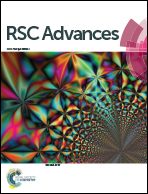Metal-mediated synthesis of pyrrolines
Abstract
The five-membered, nitrogen-containing pyrroline ring is a privileged structure. This ring is present in many bioactive compounds from natural sources. Pyrrolines—the dihydro derivatives of pyrroles—have three structural isomer classes, depending on the location of the double bond: 1-pyrrolines (3,4-dihydro-2H-pyrroles), 2-pyrrolines (2,3-dihydro-1H-pyrroles) and 3-pyrrolines (2,5-dihydro-1H-pyrroles). This review aims to describe the latest advances for the synthesis of pyrrolines by transition metal-catalyzed cyclizations. Only reactions in which the pyrroline ring is formed by metal promotion are described. Transformations of the pyrroline ring in other heterocycles, and the structural manipulations of the pyrroline itself are not discussed. The review is organized into three parts, each covering the metal-mediated synthesis of the three pyrroline isomers. Each part is subdivided according to the metal involved, and concludes with a brief description of notable biological activities within the class.



 Please wait while we load your content...
Please wait while we load your content...